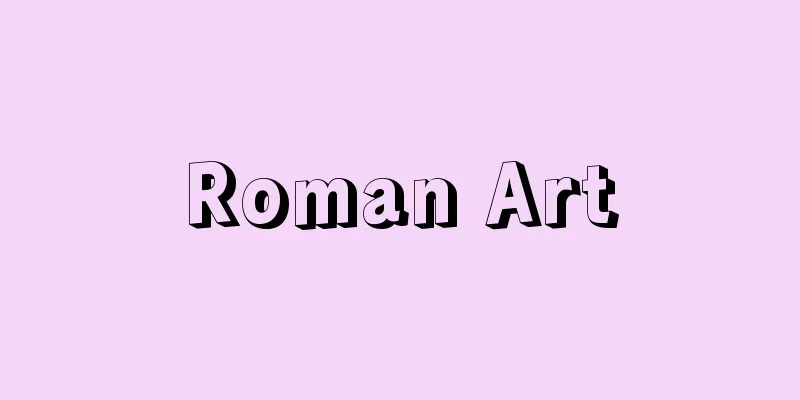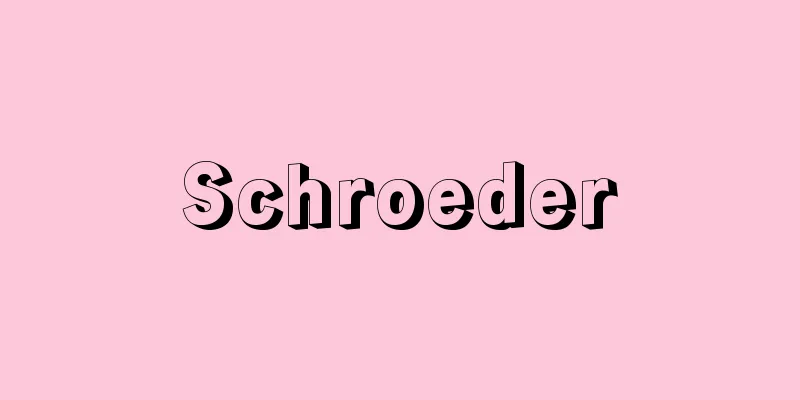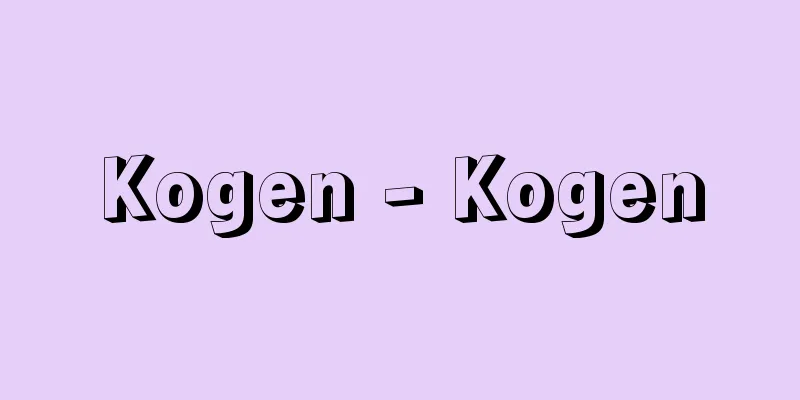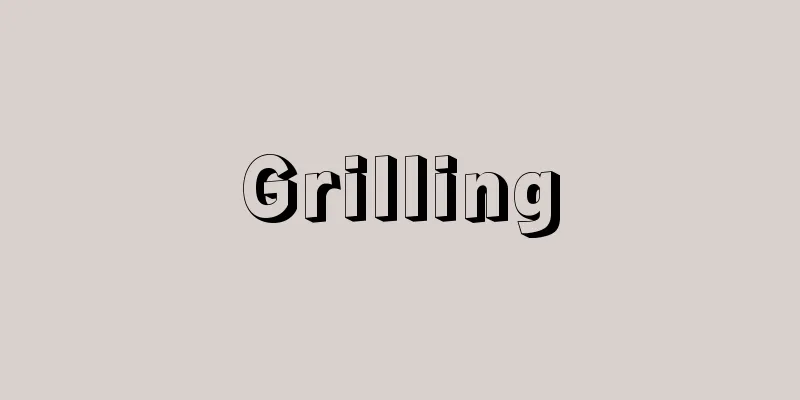Roman Art

|
Artistic activity that took place in areas ruled by the Romans, centered around the city of Rome, from the 8th century BC to around the 4th century AD. According to legend, Rome was founded by King Romulus in 753 BC. It is surrounded by several hills along the left bank of the Tiber River. During the monarchical period (753-509 BC), the region was inhabited by various tribes: Latin, Sabine, and Etruscan. Rome has been strongly influenced by Etruscan culture since ancient times, and it is said that the last three of the seven legendary kings (about half a century from around 550 BC) were probably under the control of the Etruscan monarchy. It is also during this period that the three temples of Jupiter, Juno, and Minerva were built on the Capitoline Hill, and the Regia (royal palace) and city walls were constructed. However, the foundation of their rule was not solid, and at the end of the 6th century BC, the Etruscan monarchy was expelled from Rome and the Republic was established. Having established its domestic affairs, Rome expanded its influence not only to the Italian peninsula, but also to the central Mediterranean region from Sicily to Carthage on the north coast of Africa, eventually ruling over the entire Greek cultural sphere. It also conquered various regions in central and western Europe to build a vast world state, but at the same time, the form of its domestic government also changed, and in 27 BC it entered the Imperial era. [Katsuya Hamatani] ArchitectureRoman architecture developed a structural characteristic based on a semicircle or hemisphere inherited from the East (Etruria). This structural form was used in Roman architecture, which required vast spaces, in order to ensure robustness by mechanically utilizing the weight of stone materials, and the same form was also used for openings in walls. In contrast, the exteriors of the buildings use the same design as Greek temples, from the eaves to the base. In Greek temples, the eaves and columns are structural elements as well as decorative elements, but in Roman architecture, their structural meaning is lost and they are transformed into mere decorative elements. The period of the Empire (27 BC - 476 AD) saw particular development in construction projects in Rome. The Forum (Latin; in Italian foro, meaning public square), which was the centre of Roman civic life, was made up of temples, triumphal arches and monumental columns, although these structures were also built separately. Public facilities included the Basilica (a structure combining a market and a courtroom), the Colosseum (arena), and thermae (large baths). Other notable structures from this period include the imperial tombs, aqueducts, and open-air theaters. The heyday of Roman architecture was the period from Emperor Vespasian to Emperor Hadrian (69-138), and the first building built in Rome, the Colosseum, was the largest of its kind still standing, accommodating 50,000 spectators. The triumphal arch commemorating Emperor Titus' victories in Asia Minor is the oldest surviving example, and displays a simple, elegant beauty. Emperor Trajan (reigned 98-117), who ruled during the period when the Roman Empire was at its greatest extent, also left a legacy of outstanding construction projects, such as the Foro di Traiano (started in 106, completed in 113), which was the last and largest of the imperial forums in Rome. Only the column remains almost intact, but from the few remaining foundation stones we can surmise that it was a well-balanced public facility whose main axis was a line connecting the unique Roman monuments such as the triumphal arch, basilica, column and temple. The next emperor, Hadrian (reigned 117-138), was also passionate about architecture and planned and implemented many construction projects, but the most notable was the Pantheon, a temple dedicated to the chief god Jupiter. Its circular structure with a hemispherical dome was most typically based on Etruscan forms, and its facade was decorated with a Corinthian colonnade modeled after that of a Greek temple (it was completed during the reign of the next emperor, Antoninus Pius). Hadrian's tomb was also a large circular structure with a diameter of 64 meters, facing the tomb of Emperor Augustus, which was of the same size, across the Tiber River. Today's Castel Sant'Angelo was remodeled into a fortress in the Middle Ages after it fell into disrepair. In the later Imperial period, Emperor Caracalla (118-217) and Emperor Diocletian (reigned 284-305) built the thermae, which were large, complex facilities including gymnasiums, libraries, various baths, great halls, and stadiums. [Katsuya Hamatani] Sculpture and paintingIn this field, Rome followed the Greek art that preceded it almost exactly. In sculpture in particular, many of the works created during the Roman period were copies of classical Greek works. There are quite a few original Roman works that have been passed down to the present day, but these are historical reliefs on buildings such as triumphal arches and memorial columns, or on sarcophagi. In particular, the reliefs on the memorial columns of Emperors Trajan and Marcus Aurelius (reigned 161-180) are a kind of scroll painting with a spiral shape carved into the column and stretch over 200 meters, and are extremely valuable in terms of history and art style. In addition, the Ara Pacis (Altar of Peace), which was built by Emperor Augustus (reigned 27 BC-14 AD) to commemorate the restoration of domestic order brought about by the imperial government, is a masterpiece that is also called the "Roman Parthenon Frieze." Other Roman sculptures of great importance in the history of art include various portraits (busts, seated figures, standing figures, and equestrian statues). The Etruscan custom of placing the portraits of a married couple on a sarcophagus remained as a tradition, and the excellent portrait sculptures of late Greece greatly fostered this type of Roman sculpture. The most famous examples are the standing statue of Emperor Augustus in military uniform and the equestrian statue of Emperor Marcus Aurelius. The murals and mosaics decorating the architecture reflect the practical and pragmatic character of the Roman people, and show a marked tendency towards leisure and pleasure. The excavations of Pompeii and Herculaneum, which were buried in the eruption of Mount Vesuvius in 79, show this reality to the present day. Scenes from the rich and elegant daily life of the Romans were widely depicted as themes for painting, and still lifes, animals, and landscapes were arranged to convey the true feelings of the Roman people at that time. Since wealthy Romans invited Greek painters to create their works, the murals, which are thought to have been directly influenced by Greek painting, are of extremely high quality and are mostly kept in the Naples National Archaeological Museum. Some murals and mosaics have also been discovered in Rome, and these are currently on display in the National Museum of Rome. [Katsuya Hamatani] "The Complete History of Western Art 3: Roman Art" by H. von Heinze, translated by Hasegawa Hirotaka (1980, Graphic-sha)" "Art of Mankind: Roman Art" by R. Bianchi Bandinelli, translated by Yoshimura Tadanori (1974, Shinchosha) " "Cultural Sites of the World 4: Rome and Pompeii" by Go Shigeichi (1968, Kodansha)" [References] | | | | | |It is the largest building in ancient Rome and is also known as the Colosseum. It is surrounded by three tiers of seats and a fourth tier of standing room only, and the top tier is decorated with a colonnade. Part of the World Heritage Site "Historic Centre of Rome, the Papal States and the Basilica of St. Paul the Great" (Italy/Vatican City, registered in 1980 and 1990) Rome, Italy ©Masashi Tanaka "> Coliseum A medieval fortress facing the Tiber River, it was also used as a prison. In ancient Rome, it was the Mausoleum of Hadrian. It is now the Museum of Weapons. Part of the World Heritage Site "Historic Centre of Rome, the Papal States and the Basilica of San Paolo fuori le Mura" (Italy/Vatican City, registered in 1980 and 1990) Italy Rome ©Shogakukan "> Castel Sant'Angelo Thermae is a public bath in ancient Rome built between 212 and 216. It had hot air baths, hot water baths, cold water baths, as well as a recreation room and a library, and could accommodate 1,600 people. Part of the World Heritage Site "Historic Centre of Rome, the Papal States and the Basilica of St. Paul the Fori le Mura" (Italy/Vatican City, registered in 1980 and 1990) Italy Rome ©Shogakukan "> Caracalla Baths Source: Shogakukan Encyclopedia Nipponica About Encyclopedia Nipponica Information | Legend |
|
紀元前8世紀から紀元後4世紀ごろまで、都市ローマを中心に、ローマ人が支配した地域において行われた美術活動。 伝説によれば、前753年にロムルス王によって建設されたといわれるローマは、テベレ川左岸に沿っていくつもの丘陵を抱えているが、王政時代(前753~前509)には、この一帯にラテン、サビニ、エトルリアの各種族が居住していた。ローマは古くからエトルリア文化の強い影響を受けており、伝説的諸王7代のうち、おそらく最後の3代(前550年ころから約半世紀)はエトルリア王権の支配下にあったとされている。カピトリーノの丘にユピテル、ユノ、およびミネルバの3神殿が建てられ、レギア(王宮)や城壁などの建造が行われたのも、この時期にあたるとみなされる。しかし、彼らの支配の基盤は強固なものではなく、前6世紀末に至ってローマからエトルリア王権は追放され、共和制が樹立される。内政を整えたローマは、イタリア半島のみならず、シチリア島からアフリカ北岸のカルタゴに至る地中海中部に勢力を拡充し、ついにギリシア文化圏の全域を統治するに至った。さらに、ヨーロッパの中西部の各地域も制圧して広大な世界国家を建設するが、それとともに内政形式も変わり、前27年に帝政時代に入るのである。 [濱谷勝也] 建築ローマ建築は、その構造上の特質として、東方(=エトルリア)から継承した半円もしくは半球を基本とする形式を発展させた。広大な空間を必要とするローマの建築にこの構造形式が用いられたのは、石材の重量を力学的に利用して堅牢(けんろう)さを確保するためであり、壁体の開口部にも同じ形式が用いられる。これに対し外装には、ギリシア神殿の軒から基壇に至るデザインをそのまま使っている。ギリシア神殿では、軒も円柱も構造体であると同時に装飾デザインの役割を負うが、ローマ建築の場合は構造上の意味は失われて、単なる装飾デザインに転化されるのである。 ローマで造営事業がとくに進展を示すのは帝政時代(前27~後476)である。ローマ市民生活の中心をなしたフォルムforum(ラテン語。イタリア語ではフォロforo=公共広場)は、神殿、凱旋(がいせん)門、記念柱などで形成されるが、これらの建造物は個別的にも建てられる。公共的施設としては、バシリカ(市場と法廷とが併設された建造物)、コロセウム(闘技場)、テルマエ(大浴場)などがあげられる。さらに皇帝の陵墓や、水道橋、野外劇場などもこの時代の建造物として見落とせない。 ローマ建築史上の最盛期は、ウェスパシアヌス帝からハドリアヌス帝に至る期間(69~138)であるが、最初に造営されたローマのコロセウムは、各地に現存するこの種の建造物では最大規模を有し、約5万人の観客が収容されたという。また、ティトゥス帝の小アジア地域における戦勝を記念する凱旋門は、現存するものではもっとも古く、端正で簡潔な構成美をみせている。 ローマ帝国の治世が最大領域を占めた時期のトラヤヌス帝(在位98~117)は、造営事業にも傑出した業績を残しており、ローマ市内における事例としてはフォロ・トライアーノForo di Traiano(106着手、113完成)が皇帝フォルム中最後の、最大のものとして画期的である。原形をほぼとどめているのは記念柱のみであるが、わずかに残る礎石から、凱旋門、バシリカ、記念柱、および神殿といったローマ固有のモニュメントを結ぶ線が主軸となる、均整のとれた公共施設であったことが推測できる。 次のハドリアヌス帝(在位117~138)も建築に情熱をもち、多くの造営事業を企画・実施したが、特筆されるのは主神ユピテルに奉献された神殿「パンテオン」である。円形のプランに半球形の円蓋(えんがい)を架したその構造には、エトルリア由来の形式がもっとも典型的に適用され、正面はギリシア神殿のそれを模したコリント式柱廊で装われている(完成は次のアントニヌス・ピウス帝の時代)。またハドリアヌス帝の陵墓も直径64メートルの円形プランの大建築で、テベレ川を挟んで同一規模のアウグストゥス帝のそれと相対していた。今日のサンタンジェロ城は、荒廃後、中世に要塞(ようさい)として改造されたものである。 帝政時代の後期になると、カラカラ帝(118―217)およびディオクレティアヌス帝(在位284~305)によってテルマエが実現されるが、これは体育室、図書室、各種浴室、大広間、競技場などが配置された、複雑で大規模な総合施設であった。 [濱谷勝也] 彫刻と絵画この分野においては、ローマは、先行のギリシア美術をほとんどそのまま踏襲している。とくに彫刻においては、ローマ時代に制作された作品の多くが、古典ギリシアの模作であった。ローマ独自の作品で現在に伝えられているものもけっして少なくはないが、それらは凱旋門、記念柱などの建造物、あるいは石棺に施された歴史的浮彫りである。とくにトラヤヌス帝およびマルクス・アウレリウス帝(在位161~180)の記念柱の浮彫りは、円柱に螺旋(らせん)状に刻まれた200メートル以上にわたる一種の絵巻物で、歴史上、美術様式上きわめて貴重である。またアウグストゥス帝(在位前27~後14)が、帝政のもたらした内政秩序の回復を記念して設けたアラ・パキス(平和の祭壇)は「ローマのパルテノン・フリーズ」ともいわれる秀作である。 そのほかローマ彫刻で美術史上重要な意義をもつものに、各種の肖像彫刻(胸像、座像、立像、騎馬像)があげられる。石棺の上に夫妻の肖像を配置するエトルリアの習慣が伝統として残り、ギリシア後期の優れた肖像彫刻が、この種のローマ彫刻を大いに育成した。そのもっとも著名な事例はアウグストゥス帝軍装立像とマルクス・アウレリウス帝騎馬像である。 建築を装飾する壁画やモザイクは現実的・実利的なローマ人の性格を反映し、風俗的で享楽的な傾向が顕著である。その実態を現代に伝えているのは、79年のベスビオ火山噴火で埋没したポンペイやヘルクラネウムの発掘品であるが、豊かで風俗的な日常生活の諸場面が絵画表現の主題として広範に取り上げられ、それに静物・動物・風景が配されて、当時のローマ人の生活感情をありのまま伝えている。富裕なローマ人はギリシアの画家を招いて制作にあたらせているので、ギリシア絵画の影響を直接伝えたと思われる壁画にはきわめて高度な技巧が認められ、その大部分はナポリ国立考古博物館に所蔵されている。またローマ市内からも若干の壁画とモザイクが発見されており、これらはローマ国立美術館に現存する。 [濱谷勝也] 『辻茂編著『大系世界の美術6 ローマ美術』(1976・学習研究社)』▽『H・フォン・ハインツェ著、長谷川博隆訳『西洋美術全史3 ローマ美術』(1980・グラフィック社)』▽『R・ビアンキ・バンディネルリ著、吉村忠典訳『人類の美術 ローマ美術』(1974・新潮社)』▽『呉茂一編著『世界の文化史蹟4 ローマとポンペイ』(1968・講談社)』 [参照項目] | | | | | |古代ローマ最大の規模を誇る建築物で、コロッセオともいわれる。3層の座席と立見席(4層目)がぐるりと取り囲み、最上層は列柱で飾られていた。世界文化遺産「ローマ歴史地区、教皇領とサンパオロ・フォーリ・レ・ムーラ大聖堂」の一部(イタリア/バチカン市国・1980、1990年登録) イタリア ローマ©Masashi Tanaka"> コロセウム テベレ川に面して建つ中世の城塞で、監獄としても使用された。古代ローマ時代にはハドリアヌス廟であった。現在は武器博物館となっている。世界文化遺産「ローマ歴史地区、教皇領とサンパオロ・フォーリ・レ・ムーラ大聖堂」の一部(イタリア/バチカン市国・1980、1990年登録) イタリア ローマ©Shogakukan"> サンタンジェロ城 212年から216年にかけて造営された古代ローマの公衆浴場(テルマエ)。熱気浴場、温湯浴場、冷水浴場のほか、娯楽室や図書館などを備え、1600人を収容できた。世界文化遺産「ローマ歴史地区、教皇領とサンパオロ・フォーリ・レ・ムーラ大聖堂」の一部(イタリア/バチカン市国・1980、1990年登録) イタリア ローマ©Shogakukan"> カラカラ浴場 出典 小学館 日本大百科全書(ニッポニカ)日本大百科全書(ニッポニカ)について 情報 | 凡例 |
<<: Pros Romaious; The Letter to the Romans
>>: Roman Peace - Pax Romana (Latin)
Recommend
Cloud Chinese - Unchugo
…As an authority on the criticism scene at the ti...
"Pilgrimage of the Six Paths of Pure Water and Pure Gentian"
The main scenes are "Kiyomizu-dera Scene&quo...
Law - Haha
A word meaning law in the Middle Ages and early m...
International monetary system
A general term for the monetary system of the inte...
Uighur - Uighur (English spelling)
One of the Turkic tribes. In Chinese historical d...
Weber, A.
...The theory regarding the location of industrie...
Etruscan Sarcophagus - Etruria no sekkan
...The tombs of the Scipio family and their sarco...
Color photos - Color photos
Also known as natural color photography. There are...
International Gymnast Federation (English)
…In the second half of the 19th century, gymnasti...
Saturn Nebula
A planetary nebula in the constellation Aquarius, ...
Ishimochi (Argyrosomus argentatus) - Ishimochi (English spelling)
A marine fish of the family Sciaenidae in the orde...
Iceboating
A sailboat on ice, propelled by sails, and a sport...
Air turbine - kukitabin (English spelling) air turbine
A turbine that uses high-pressure air instead of ...
Aphididae - Aphididae
...Some say that this group should be treated sep...
Acute eczema - Acute eczema
…This is the basic cycle of individual eczema les...









